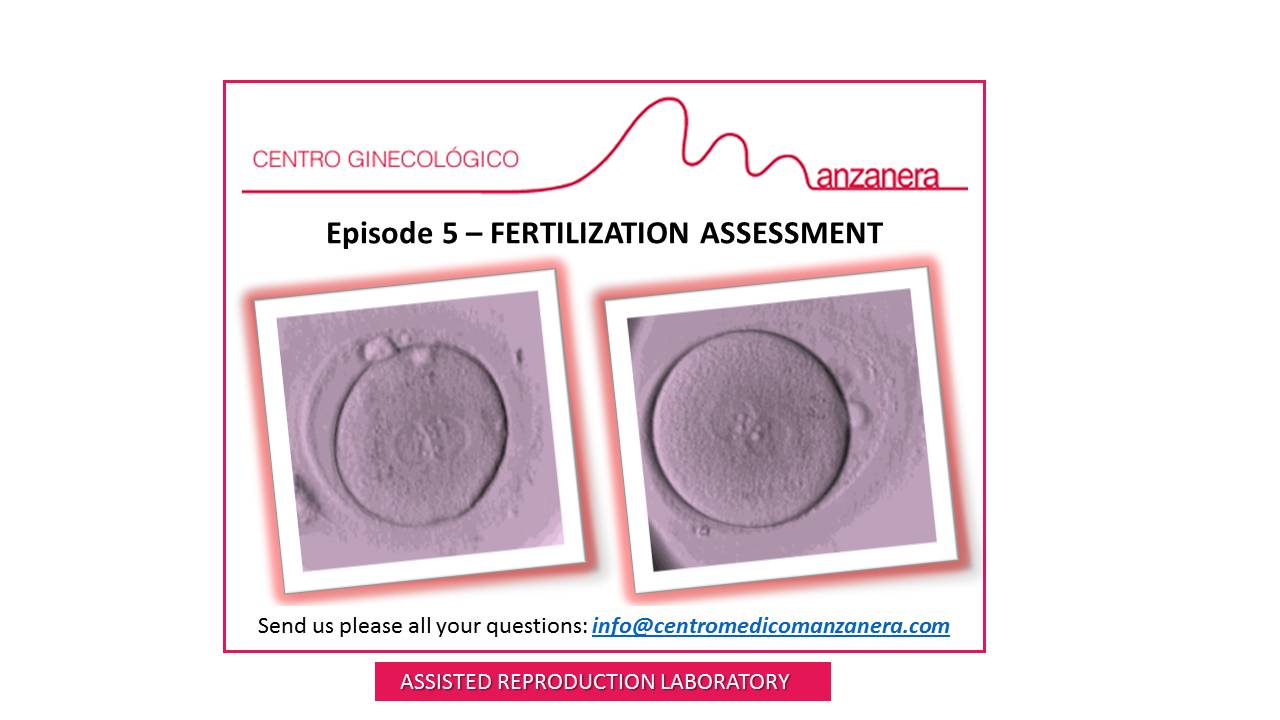Good Morning!
As we have been explaining in the previous chapters, we have already fertilized the retrieved eggs, obtained by the puncture, using either of the two possible techniques explained before (conventional IVF or ICSI-IVF).
What is the next step?
We must wait about 16-22h and then we will be able to ASSESS THE FERTILIZATION.
Within ICSI, we had previously “undressed” them of the surrounding cells (Episode 4) and, therefore, we only need to look them under a microscope.
But within eggs conventionally fertilized, this step was not yet taken, so first of all, we must eliminate the cells surrounding the egg, just to be able to see it properly under a microscope.
Once we have the eggs ready, we place them under the microscope and examine them.
What do we expect to see? There are two signs that indicate that the egg has been successfully fertilized.
The first is that it has two polar corpuscles. Let’s explain it step by step. Before getting fertilized, the egg, in addition to the main circular part (the image that we all have in mind), has also a small “section”, a kind of “grain” outside that main circumference. During the development of the egg, it has removed half of its genetic material and placed it inside this “grain”. After, when both sexual cells meet (egg and sperm), the right number of chromosomes will be then completed and enough to create the genome of the embryo. If the fertilization has been successful, two corpuscles are to be seen, instead of only one.
The second sign that indicates that the egg has been fertilized is the presence of two pronuclei, the male and the female, since the meeting of the chromosomes (the genetic material) of both cells does not suddenly happen.
In the cover image of this chapter you can find two examples of two real fertilized eggs, so you can clearly see the details.
If any egg presents any other variations, for example, three pronuclei, we can infer that the fertilization took place, but in an anomalous way and, therefore, we will discard it.
Once we have sorted the fertilized eggs, we will keep them in culture in the laboratory, waiting to see their development.
If you have any questions or want to undergo a treatment with us, you can contact us by sending an email to info@centromedicomanzanera.com or using the contact forms on our website: https://centromedicomanzanera.com/en/presupuesto/
Have a nice day!
María Pombar Gómez
Embryologist
IMAGES: Property of Centro Médico Manzanera

